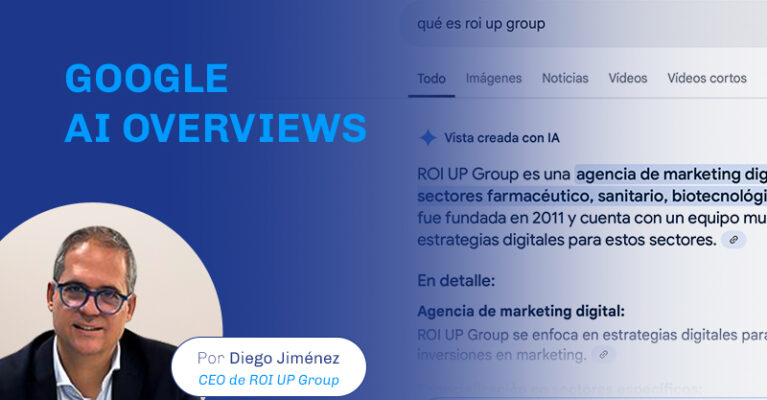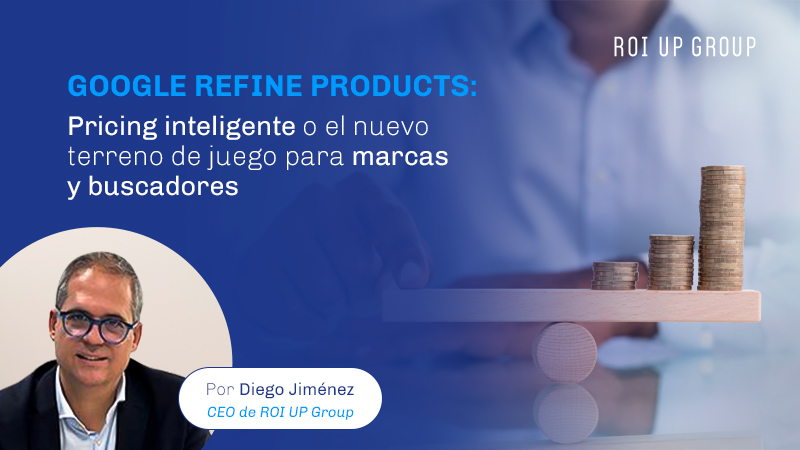
Smart pricing or the new playing field for brands and search engines
By Diego Jiménez, CEO of ROI UP Group
If there is one digital revolution characterized by change, almost on a daily basis, it is the digital marketing revolution of 2025. Artificial intelligence is redefining the search experience. What used to be a simple list of links is now being transformed into a guided, visual and hyper-personalized shopping experience. In this new scenario, Google Refine Products emerges as one of the major AI-driven breakthroughs in the search engine ecosystem: an evolution that turns search into true assisted shopping decisions.
Thanks to the use of generative algorithms, predictive models and layers of machine learning, Google is now able to anticipate needs, compare key variables and show, in real time, the best possible results. At ROI UP Group we have been monitoring this evolution closely for months, aware that it will be a turning point for brands and their visibility on Google. This is a new search engine activated in the US, which has begun to be tested in LATAM, and whose arrival in Europe is imminent…
But what exactly is Google Refine Products?
Google Refine Products is an evolution of the search engine that offers a more visual, comparative and interactive shopping experience. It integrates advanced filters that allow you to refine your search by product (such as size, color, delivery or returns), and reorganizes the results as if they were product cards, very much in the marketplace style. In addition to displaying prices, ratings and availability, it adds featured blocks such as:
- Top Recommendations
- Best price / price history
- Ratings and reviews
- Costs and delivery times
- Return policies
- Stock on hand
- Visual blocks by brand (Explore Brands)
Example of Google Refine Products in a search with criteria ‘Product Detail + Price Comparison and Reviews:
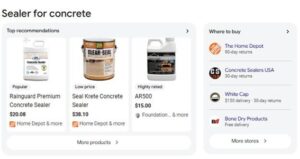
Source: Google USA, March 2025
The perfect ecommerce hook: new pricing news on Google Refine Products
And if there is one place to start in implementing user- or consumer-friendly updates to a marketplace, it is undoubtedly the area of pricing. Thanks to the analysis of recent screenshots, Google has incorporated even more powerful features in this regard:
- Visual price history: Price evolution graphs by product.
- Direct price comparator: Similar products with different prices and sellers at a glance.
- Price tracking system: The user can trigger notifications when a product drops in price. This tracking is integrated into the Google account and sends alerts by email.
Example of Google Refine Products in a search with criteria ‘Product Detail + Price Fluctuations’:
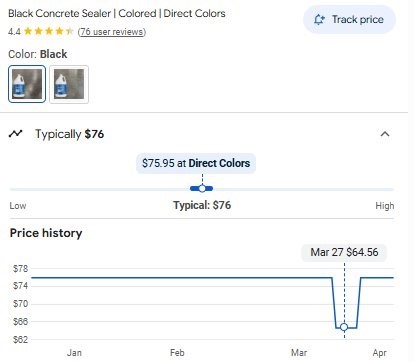
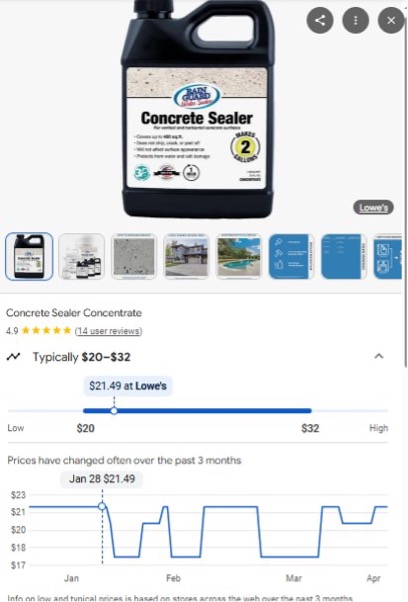
Source: Google USA
April 2025
Why Google leads the way: why marketplaces should rethink their pricing strategy?
For any marketplace, updating and improving the user experience is not only a technical issue, but a strategic decision that directly impacts conversion, loyalty and competitive advantage. In an environment where comparison is constant and immediacy is key, offering clear, useful and real-time information has become a standard expected by consumers. Brands and retailers that align with this new, more transparent, visual and interactive way of presenting products will be in a better position to capture attention, build trust and close sales more efficiently.
And if there is a place to start implementing these improvements, it is price. Google knows this, which is why it has incorporated three key functions that will mark a before and after: a visual price history that allows the user to understand the evolution of the cost of a product; a direct comparator between sellers that shows similar options at a glance; and a tracking system that allows users to receive email notifications of any price drop. This not only empowers the consumer, but also forces brands to be more competitive, agile and precise in their pricing strategy.
Example of a generic image of Google Refine Products:
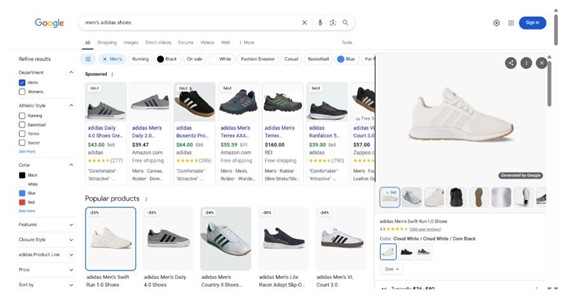
Source: Google USA
April 2025
How to adapt to these overwhelming changes?
The truth is that, with the arrival of Google Refine Products, traditional search engine positioning is no longer enough. It is now essential to meet four major criteria:
- Optimize the product page (structure, content, speed).
- Incorporate a GEO (Generative Engine Optimization) approach to align the web with IA criteria.
- Work on your brand’s generative fingerprint and results in Google AI Overviews.
- Make sure that all your products are indexed and eligible to be displayed as refine products.
Could this be a smart response to TikTok Shops or Amazon?
Although it is still too early to say for sure, at ROI UP Group we believe it is. Google is reconfiguring its search engine to compete in the field of smart commerce, a field that until now has been dominated by traditional marketplaces.
With this evolution, it makes it clear that it wants to be not only the starting point of a purchase, but also its final destination. The move is ambitious, but also logical: the user is looking for speed, trust and clear data; and Google has the ecosystem, technology and AI to deliver it. The future of eCommerce is not only played out on platforms: it is also played out in search results. And being prepared for it will make all the difference.
List of AI publications
- From Social Media Listening to AI Listening:
- Google Short Videos New Horizons and AI Strategies
- We sponsor Best!n Food 2025: AI, reputation and brands that make a mark
- Google Refine Products
- Google AI Overviews’ expansion in Europe and what it means for your brand
- Artificial Intelligence Publications
- Crisis at OpenAI: The Pulse of Sam Altman


